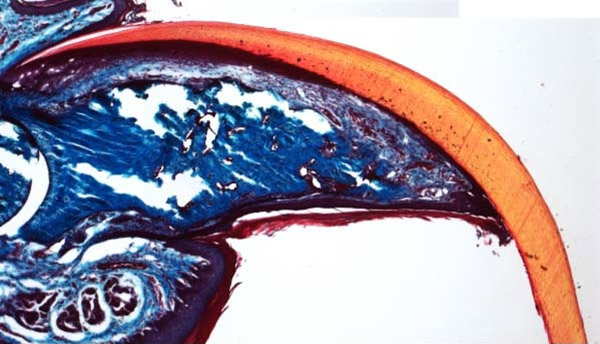Amputated ‘finger’ tips grow back
Both toenails and toe tips grew back in mice, thanks to special ‘stem’ cells living beneath the nails
Share this:
- Share via email (Opens in new window) Email
- Click to share on Facebook (Opens in new window) Facebook
- Click to share on X (Opens in new window) X
- Click to share on Pinterest (Opens in new window) Pinterest
- Click to share on Reddit (Opens in new window) Reddit
- Share to Google Classroom (Opens in new window) Google Classroom
- Click to print (Opens in new window) Print

Cut your fingernails and they will grow back. For some people — especially children — that’s also true of fingertips: Cut them off and they may well come back. Scientists have now investigated why, thankfully using mice. Both nails and toe tips regrow thanks to special cells found under the base of each nail, they find.
The same may also hold true for people, says Mayumi Ito, who led the new study. She researches these special cells at New York University Langone Medical Center. Her team’s findings suggest that in the future, doctors might use those special cells to treat people with amputated limbs or misshapen nails.
The idea that animals can regrow, or regenerate, fingertips and nails is hardly new. But regeneration occurs only when some part of the nail remains on the finger. To probe why, Ito and her coworkers looked for the cells responsible.
They found a class of special cells — known as stem cells — beneath the nails. These cells reside in sensitive tissue under the bottommost part of the fingernail. This region is concealed by skin. Ito and her coworkers found that when they cut off the tip of a mouse’s toe — including some bone — the nail began to regrow. The damaged tissue also sent chemical signals to start replacing the lost bone.
But the scientists got a different result when they cut off all of the nail tissue. This had included that region under the skin at the base of the nail. Now the end of the digit remained amputated — it didn’t grow back. Bone and toe-tissue regrowth occurred only if the toe retained some of the special stem cells.
But stem cells alone can’t do the job, Ito and her team report in the June 12 Nature. Stem cells help with the normal growth of an area of tissue under the nail. This new tissue helps build new bone. If that tissue, too, is lost during an amputation of a finger- or toe tip, then the stem cells can’t jump-start this process.
Mammals aren’t the only animals that can regrow lost toes. Amphibians can too. Newts, for example, can regrow entire legs. That ability, seen across many different types of species, suggests that what works in mice might also happen in people.
That many different animals can regrow tissue is exciting, says biologist Ken Muneoka of Tulane University in New Orleans. It “gives us hope that we will be able to induce human regeneration in the not too distant future,” he told Science News.
Until then, be careful with those clippers.
Power Words
dermatology The branch of medicine concerned with skin disorders and their treatments.
biology The scientific study of living things.
amphibian A category of cold-blooded vertebrate animals that includes frogs, toads, newts and salamanders.
stem cell A “blank slate” cell that can give rise to other types of cells in the body. Stem cells play an important role in tissue regeneration and repair.







